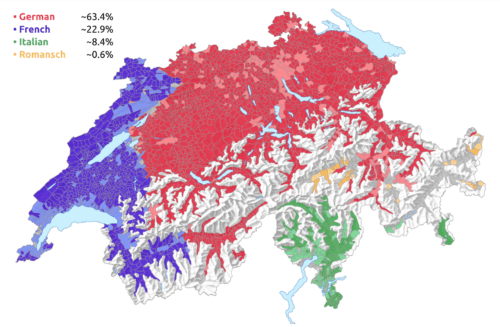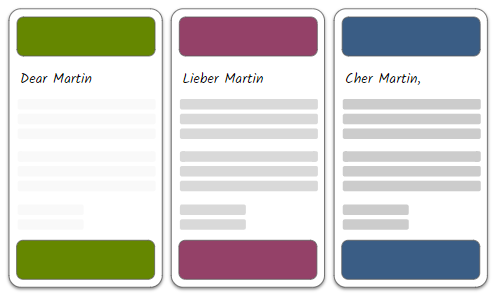Multilingual Marketing Campaigns Using Marketing Technology
Reaching diverse audiences is not just an option but a strategic necessity, especially in Switzerland. Multilingual marketing campaigns emerge as a pivotal tool in this pursuit, unlocking unprecedented opportunities for customer engagement. But what exactly constitutes a multilingual marketing campaign, and why should businesses allocate resources to embrace this complex approach?

What is a Multilingual Marketing Campaign?
A multilingual marketing campaign is a sophisticated strategy aimed at connecting with diverse audiences by tailoring marketing materials to different languages and cultural nuances. It transcends mere translation, delving into the intricacies of communication, ensuring that the message not only resonates but also forges a meaningful connection across linguistic and cultural boundaries.
Multilingual Complexity: Hurdles Faced by Businesses
Tackling the multilanguage aspect presents formidable challenges for companies on several fronts. Firstly, the complexity of managing translations amplifies as content diversifies across languages, often leading to a convoluted and challenging process of content gathering.
Obtaining accurate language information about individuals adds another layer of complexity, as sources may vary from CRM databases to web activities or customer care interactions. The need to reconcile these diverse sources poses a significant hurdle.
Furthermore, finding synergies becomes imperative to prevent operational tasks from multiplying exponentially, ensuring efficiency in the face of linguistic diversity. Lastly, the validation process introduces its own set of complications, demanding meticulous scrutiny to guarantee linguistic accuracy and cultural relevance across varied language segments.
In essence, the multifaceted nature of these challenges contributes to the struggles that companies encounter when endeavoring to navigate the complexities of multilingual operations.
Benefits of Creating a Multilingual Marketing Campaign with Marketing Automation

Higher Engagement Rates
The impact of multilingual campaigns is most evident in elevated engagement metrics, such as increased email opening rates. Content delivered in the recipient’s native language captures attention more effectively, fostering a deeper connection.

Increased Conversion Rates
The transformative power of offering multilingual assets throughout the customer journey manifests in significantly boosted conversion rates. When customers encounter content in a language they understand, the likelihood of conversion skyrockets.

Brand Positioning
At the core of a successful multilingual campaign lies a profound respect for local specificities. It transcends linguistic adaptation, extending to a nuanced understanding of cultural norms, thereby strengthening the brand’s positioning on a global scale.

Segmented Content Adaptation
Tailoring content based on diverse segments ensures relevance. Whether adjusting language nuances or customizing offers, this personalized approach amplifies the effectiveness of the campaign across varied demographics.

Improved Online Presence
The ripple effect of multilingual content extends to bolstering Search Engine Optimization (SEO) in local languages. The critical factor lies in ensuring that web pages are not only translated but also indexed by the pertinent search engines, contributing to a robust online presence.
How Multilingual Marketing Campaigns Work
At the core of a multilingual marketing campaign lies a unified stream where all contacts undergo the same journey. The consistency extends to the template of marketing assets, with content being translated or adapted based on the user’s language. Occasional variations may occur, such as showing or hiding specific elements within the template, altering links, or replacing contact details to cater to different languages.


Briefing and Master Template Creation
Commence the journey with a comprehensive briefing, laying the foundation for the creation of a master template in a primary language.

Content Identification and Collection
The meticulous process involves identifying content requiring translation or adaptation based on the language. Centralizing this content ensures seamless updates with minimal effort.

Integration of Rules and Logic
The next step involves the integration of rules and logic into the master template, providing a framework to accommodate language-specific variations seamlessly.

Testing
Rigorous testing is imperative, with the identification of test contacts in each language. This ensures the flawless execution of the campaign, addressing potential challenges before the campaign goes live.

Journey Creation
This stage entails the creation of the campaign journey based on relevant triggers, such as newsletter subscriptions. This step guarantees a personalized experience for each audience, enhancing the campaign’s impact.

Reporting
Once the campaign is implemented, it becomes essential to conduct a thorough analysis to gauge the effectiveness of the measures taken. This involves assessing key performance indicators (KPIs) to determine whether there has been a tangible improvement or not.
How Language Information is Obtained
Obtaining accurate and up-to-date language information about customers can be a hurdle, especially when relying on diverse sources such as CRM data, web activities, or customer care interactions. In essence, the multifaceted nature of language-related challenges contributes to the struggle companies face when striving to seamlessly implement and manage effective multilingual strategies.

CRM
Extracting language information from the Customer Relationship Management (CRM) system forms a foundational source for understanding the linguistic preferences of the audience.

Web Activities
Leveraging data from web activities, such as browser language or website language, through the use of a data layer provides valuable insights into language preferences.

Preference Center
The incorporation of preference centers serves as a strategic approach to gather language information, allowing users the autonomy to select their preferred language.

Geographical Information
While challenging, geographical data, such as postcode information, can provide cues about language preferences, especially in regions with diverse linguistic landscapes like Switzerland.

Customer Care Department
Making language fields compulsory in customer care interactions offers a direct means of collecting language information. Operators can fill in missing information during calls, contributing to a comprehensive understanding of language preferences.

